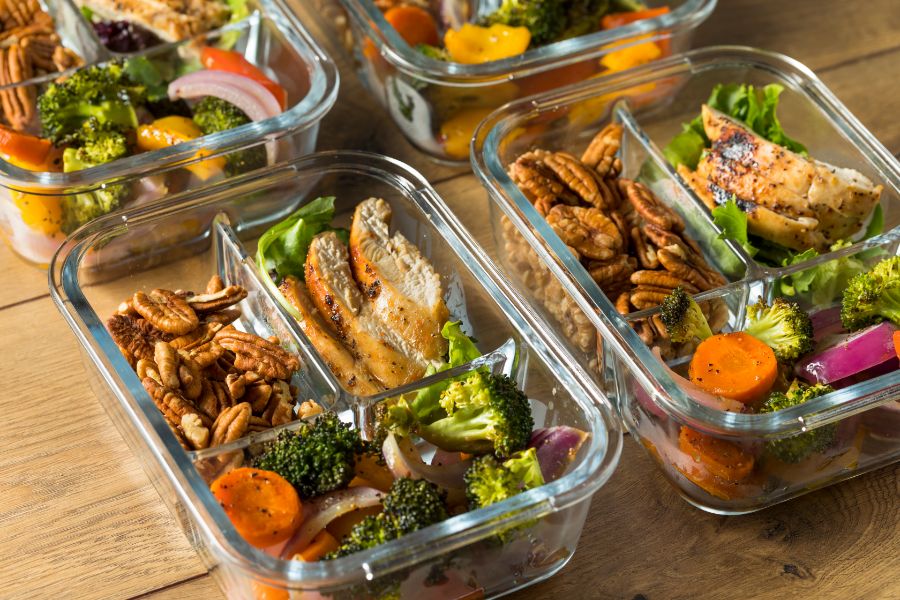Are you tired of spending too much money on takeout and eating unhealthy meals? Well, it’s time to take control of your kitchen and start meal prepping like a pro!
In this article, we will show you how to plan your meals ahead of time, make a grocery list that saves you money, and batch cook for the week.
With proper storage and portioning techniques, as well as incorporating affordable ingredients, you’ll be able to enjoy delicious homemade meals while saving some serious cash.
So let’s get started!
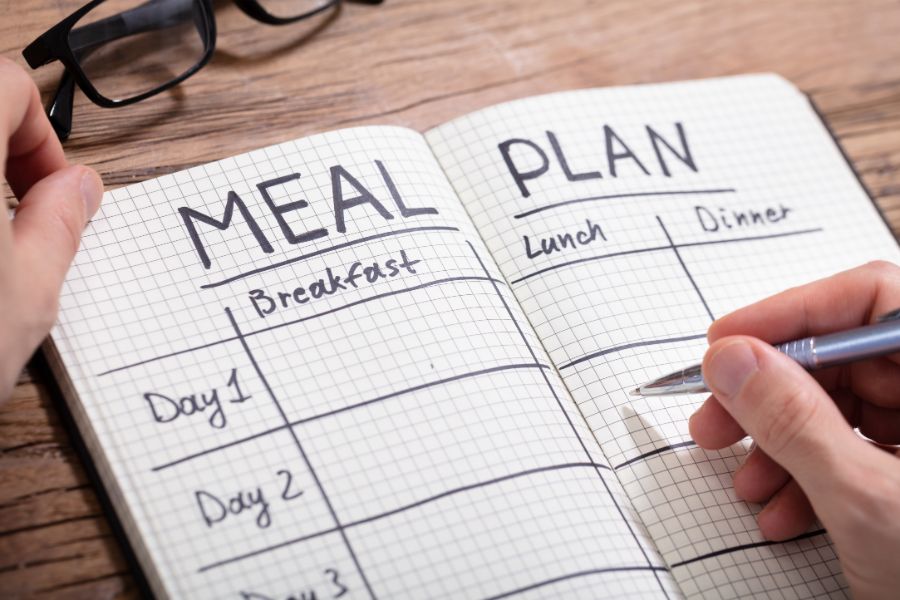
Planning Your Meals Ahead of Time
You should start by figuring out what meals you want to make for the week. This step is crucial in meal prepping like a pro and saving money. Take some time to sit down and brainstorm your favorite recipes or dishes that you would like to enjoy throughout the week. Consider incorporating a variety of proteins, such as chicken, beef, or tofu, along with a mix of vegetables and grains.
Once you have decided on your meals, create a shopping list based on the ingredients needed for each recipe. Check your pantry and fridge first to see if you already have some of the items on hand. This will help you avoid buying unnecessary duplicates and save money in the process.
Next, head to the grocery store armed with your list. Stick to it as much as possible and resist impulse purchases. Buying in bulk can also be cost-effective for certain items that have a longer shelf life.
After returning from the grocery store, set aside some time to prepare your ingredients. Chop vegetables, marinate meats if needed, and cook any grains or legumes ahead of time. This will make assembling meals during the busy weekdays much quicker and easier.

Making a Grocery List and Sticking to It
When making a grocery list, it’s important to stick to it in order to stay on track with your meal prep goals and budget. Planning your meals ahead of time is a great start, but without a well-thought-out grocery list, you may find yourself straying from your original plan and spending more money than you intended.
To begin, take inventory of what you already have in your pantry and fridge. This will help you avoid buying duplicate items and wasting money. Next, make a detailed list of the ingredients you need for each meal you plan to prepare. Be specific about quantities and measurements so that you don’t end up buying more than necessary.
While at the store, resist the temptation to impulse buy. Stick to your list and only purchase what’s essential for your meal prep. Avoid being swayed by flashy sales or tempting treats that aren’t part of your plan.
Remember that sticking to your grocery list not only helps you save money but also keeps you focused on achieving your meal prep goals. By avoiding unnecessary purchases, you’ll be able to allocate those funds towards quality ingredients or savings for future meals.
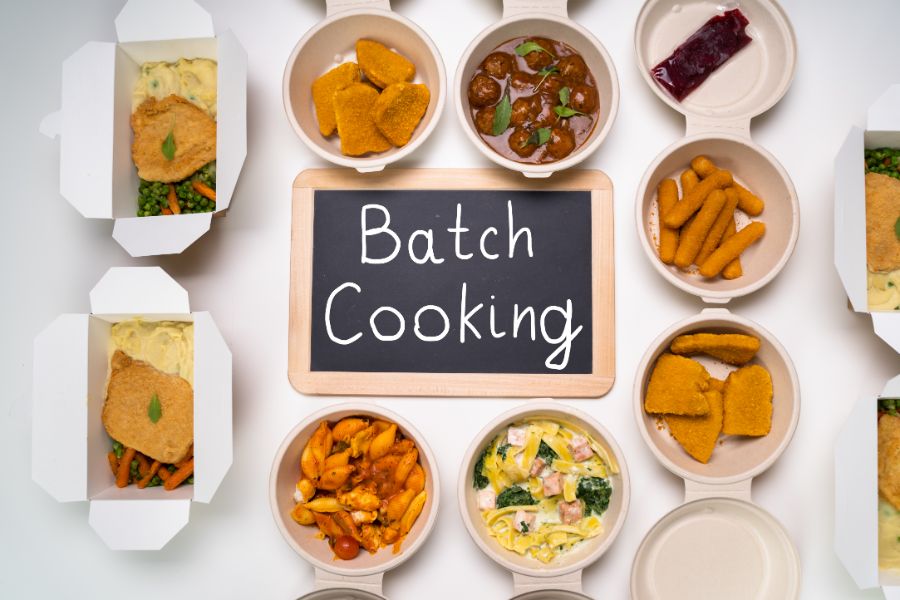
Batch Cooking for the Week
To efficiently cook for the week, start by selecting a few staple recipes that can be easily batched and stored for later consumption. Look for recipes that use similar ingredients to save time and money at the grocery store. For example, if you choose a recipe that calls for chicken, find another recipe that also uses chicken so you can buy in bulk. Once you have your recipes selected, make a detailed meal plan and create a shopping list based on the ingredients needed.
When it comes time to cook, set aside a block of time dedicated solely to meal prepping. This will help you stay focused and organized. Start by chopping all your vegetables and preparing any marinades or sauces ahead of time. Then, move on to cooking your proteins like chicken or beef. Once everything is cooked, divide it into individual portions and store them in containers or freezer bags.
Label each container with the date and contents before placing them in the refrigerator or freezer. This way, you’ll know exactly what’s inside each container and when it was prepared. When it’s time to eat during the week, simply grab one of your prepped meals from the fridge or freezer and enjoy!
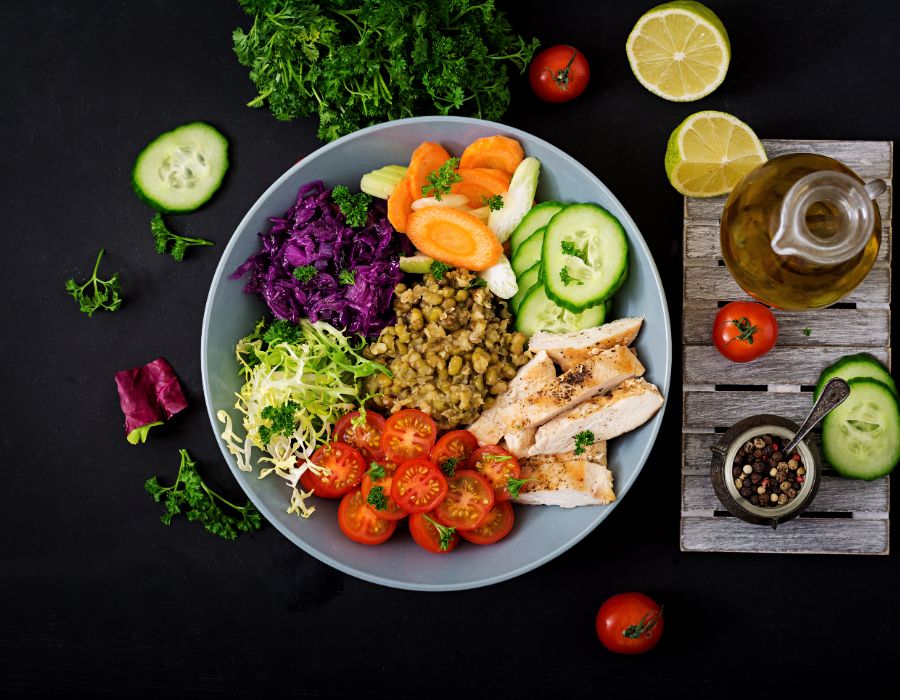
Proper Storage and Portioning
Labeling each container with the date and contents helps you easily identify and access your prepped meals throughout the week. When it comes to proper storage and portioning, organization is key.
After preparing your meals for the week, divide them into individual portions that are just right for one meal. This way, you can grab a container and have a complete meal ready to go whenever you need it.
Using clear containers is also beneficial as it allows you to see exactly what’s inside without having to open each one. This saves time and makes it easier to plan your meals accordingly. Another helpful tip is to stack your containers in an organized manner in the fridge or freezer, making efficient use of space.
By labeling each container with the date, you can ensure that you consume your meals while they are still fresh. It also helps prevent any confusion about which meal was prepped when. Additionally, make sure to rotate older meals towards the front so that they are used first.
Taking the time to properly store and portion your prepped meals will save you both time and money in the long run. You won’t have to worry about last-minute takeout orders or wasting food that has gone bad.
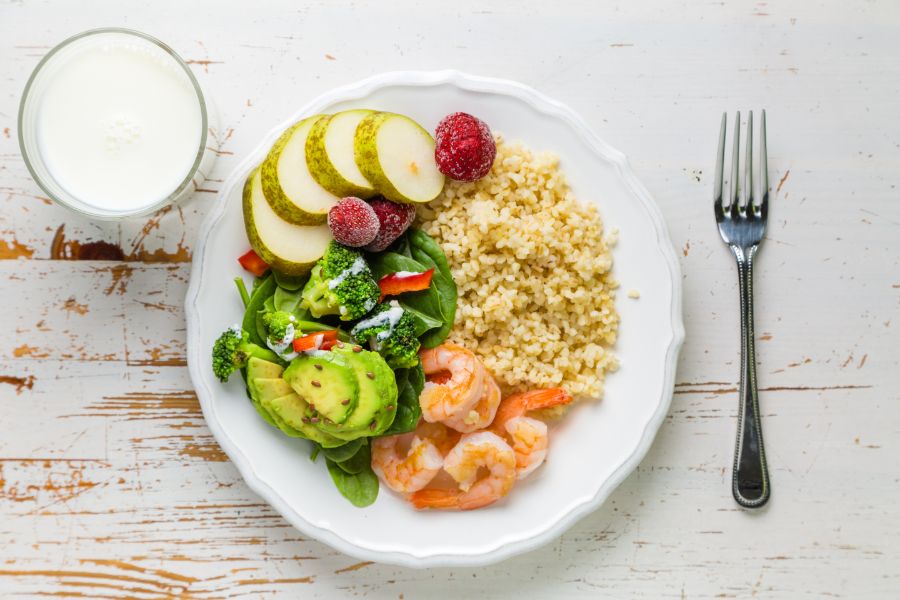
Incorporating Affordable and Versatile Ingredients
Incorporating affordable and versatile ingredients can help diversify your prepped meals without breaking the bank. When it comes to meal prepping, finding budget-friendly options that can be used in a variety of ways is key.
One great ingredient to consider is chicken. It’s not only economical but also extremely versatile. You can marinate it, grill it, roast it, or even use it in stir-fries or salads.
Another affordable option is beans. Whether you choose black beans, chickpeas, or lentils, they are all packed with protein and fiber while being easy on your wallet. They can be added to soups, stews, wraps, or even mashed for a tasty spread.
Don’t forget about eggs! They are an excellent source of protein and can be used in so many different ways. You can make omelets with veggies for breakfast or hard-boiled eggs for snacks throughout the week.
Finally, don’t overlook frozen fruits and vegetables. They are often cheaper than fresh produce and still retain most of their nutritional value. Use them in smoothies, stir-fries, or as toppings for yogurt or oatmeal.
Become a pro at saving money while still enjoying delicious and nutritious meals
Planning ahead and making a grocery list will help you stay organized and avoid impulse purchases.
Batch cooking allows you to have ready-to-eat meals throughout the week, saving time and energy.
Proper storage and portioning ensure that your food stays fresh for longer.
Lastly, incorporating affordable and versatile ingredients will help you create budget-friendly yet satisfying meals.
So start meal prepping like a pro today!

